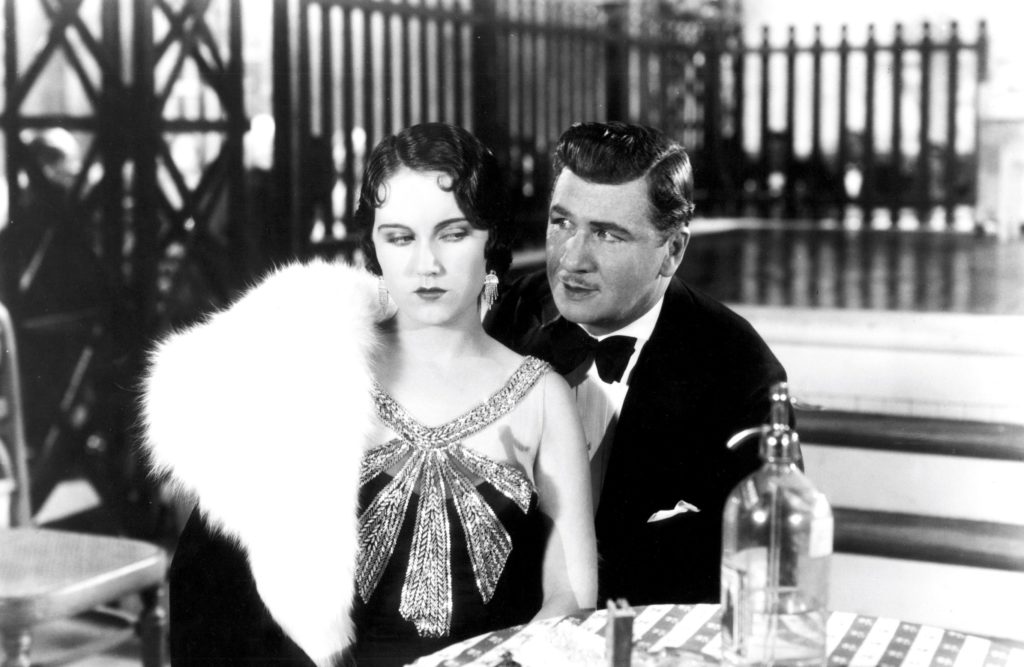Sounds Like Trouble | Thunderbolt Retrospective at 95
In the early days of Hollywood, silence must have seemed as valuable as oil or gold. Filmmakers like Charlie Chaplin and Buster Keaton made their multi-million fortunes performing pantomime for millions of happy customers all around the world. Their earliest films were often augmented off-screen by just the live accompaniment of professional cinema organists. No dialogue. No sound effects.
But then came a technological revolution like that would change the film industry forever. For better or for worse, the dawn of sound cinema heralded a new era in motion picture history. While some filmmakers believed that the talkies would be just another short-lived fad, others experimented with new techniques and storytelling devices, seeking perfect unity in sound and vision. And there was no experiment more daring in nature than Josef Von Sternberg’s Thunderbolt, the tale of a blood-thirsty gangster who plots to kill his ex-girlfriend’s new lover.
Sternberg developed his own unique approach to sound with this film. His complex layering of dialogue anticipated the stereophonic techniques of modern music and cinema. As the camera makes its way through a crowded speakeasy, we catch snippets of dialogue from characters both in and out of frame. Of course, in live theatre, gossip is a pastime reserved for the public, an activity restricted to the intermission. Onstage, actors must enunciate clearly and project to the seats at the back of the room, rarely speaking over each other. But here, Sternberg uses the clarity of the microphone to create a unique ambience, integrating background dialogue into a raucous wall of sound.
Unfortunately, the end result is quite flawed. The soundtrack is too dense and there are all manner of noises competing for our attention. At times, it can be difficult to understand what exactly is being said. In his efforts to keep pace with the new technology, Sternberg had inadvertently discovered its limits.
More successful is the director’s choice to weave brief diegetic musical sequences into the film through situations that arise naturally from the plot. The atmosphere of the Weimar cabaret is transplanted into the American speakeasy with drunken barflies entranced by a beautiful jazz singer, anticipating Sternberg’s work with Marlene Dietrich in The Blue Angel (1930). Elsewhere, a makeshift barbershop quartet functions like a Greek chorus, commenting on the main characters and the events of the plot during the long prison sequence that makes up the third act.
The filmmakers’ masterful cinematography prefigures the conventions of film noir more than ten years before they were to become common practice. The dark shadows and strong high-contrast images serve to underscore the dark underworld setting. More importantly, they lend an air of precise formality to the proceedings, the kind of painstaking craftwork largely absent in the avant garde sound design.
The screenplay by Jules Furthman, Charles Furthman, and Herman Mankiewicz feels like a true team effort, far greater than the sum of its parts. While it’s fair to say that the Furthmans’ original story is shallow and flimsy, Mankiewicz’s dialogue shows flashes of his renowned wit, elevating the material to another level.
Listen doc, you’ve just got to see that this man lives.
Do something, I’ve got to execute him tonight!
Tully Marshall as The Warden.
Upon his first arrival in Hollywood, Mankiewicz famously sent a telegram to playwright Ben Hecht, urging his friend to follow him out West and lend his talents to writing movies. “Millions are to be grabbed out here,” he wrote, “and your only competition is idiots.” Around this time, screenwriting was finally accepted as a profession unto itself. The ad-hoc stories and the dominance of onset improvisation that had defined film production in the silent era had become a thing of the past.
Gangster film star George Bancroft portrays the title role in Thunderbolt. He is suitably menacing in the part, but more remarkable is his wry sense of humour. As we quickly discover, his stocky physicality and stern manner mask a broken heart. Co-star Fay Wray later gained screen immortality as the archetypal damsel in distress in King Kong (1933). Here, as in that later film, she plays a beautiful woman struggling to escape the clutches of a frustrated beast. While her character is at the centre of the plot, she is given little agency of her own. Unsurprisingly, women were often relegated to the sidelines at this point in film history, treated less like serious actors and more like window dressing. Thankfully, strong female characters were to take centre-stage in the coming decade for the first time with the advent of the screwball comedy.

In the end, the arrival of sound films like Thunderbolt marked the beginning of one era and the end of another. As the consolidation of the studio system took place, political conservatives grew concerned about some of the risqué stories being released into cinemas. Catholic activist Fr. Daniel A. Lord worried that the novelty of the new sound films would attract young children to violent and sexual films. He met with the Motion Picture Producer and Distributor Association to propose a set of censorship guidelines. Ultimately, the Production Code was adopted by the studios in 1930. And for more than thirty years after the fact, strict censorship would stop filmmakers from tackling difficult subjects directly.

